The Garlic Knot Lesson Every Mixed Media Beginner Needs
Mixed media art is like cooking — my first garlic knots were brick-hard, but practice turned them golden. The same goes for art: combine watercolor, acrylics, collage, and more, and you’ll turn early flops into creative breakthroughs.

Mixed media art is a bit like trying out a new recipe on a big holiday. I still remember one Christmas when I proudly brought a tray of homemade garlic knots to the table—except they came out more like bricks than bread. Nobody could bite through them.
That’s the thing with both cooking and art: the first attempt doesn’t always look (or taste) the way you imagined. But with a little patience, practice, and the right ingredients, those bricks eventually turned into golden, buttery garlic knots everyone loved.
Think of this as your creative cookbook — the Mixed Media Hub is packed with recipes for bold, expressive art.
Mixed media works the same way. At first, your layers of paint, paper, and texture might feel awkward or messy. But stick with it, and you’ll discover how combining mediums can turn mistakes into breakthroughs and “flops” into expressive, one-of-a-kind art.
In this beginner’s guide, I’ll share what mixed media art is, why so many artists love it, and how you can start experimenting today—no bricks included.
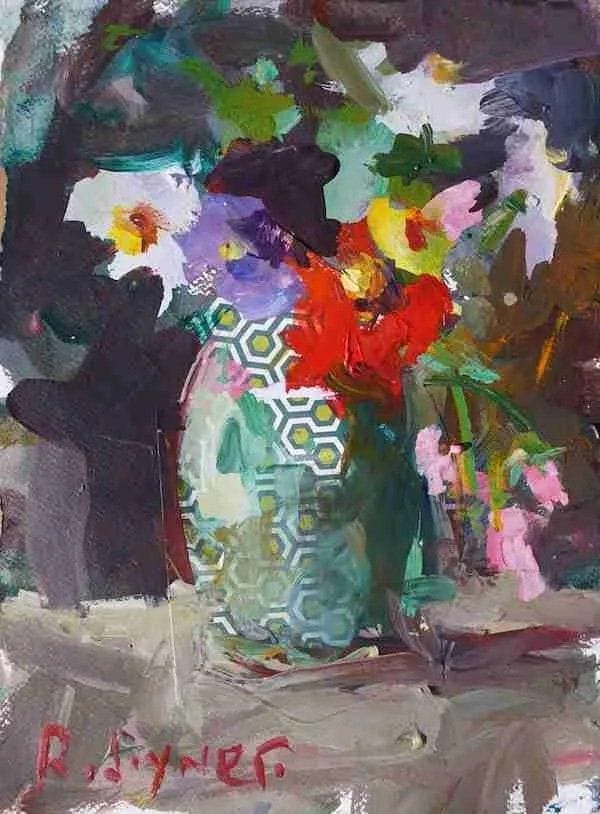
The Simple Definition of Mixed Media Art
Mixed media art is any artwork created with more than one medium. This could mean combining paints and drawing tools, or adding three-dimensional elements like fabric, paper, or found objects to your surface.
For example, I like to combine watercolor, acrylic and collage, thats mixed media art. You may prefer newspaper print, colored pencils and markers, that's mixed media art. Surfaces can range from traditional canvas to scrapbook journal.
The only real rule? Use at least two different mediums in a single piece. Beyond that, the possibilities are endless.
Painting relates to both art and life. I try to act in that gap between the two. - Robert Rauschenberg

Why Artists Love Mixed Media
There’s a reason mixed media has such a devoted following — it opens the door to creative freedom in ways that single-medium art sometimes can’t.
- Flexibility: You’re not limited to one material or technique.
- Texture & Depth: Layering mediums adds a rich, tactile quality to your work.
- Creative Problem-Solving: Mistakes can be covered, reworked, or turned into design elements.
- Sustainability: You can reuse old artwork, scraps, or materials you already have on hand.
- Playfulness: Mixed media encourages experimentation and happy accidents.
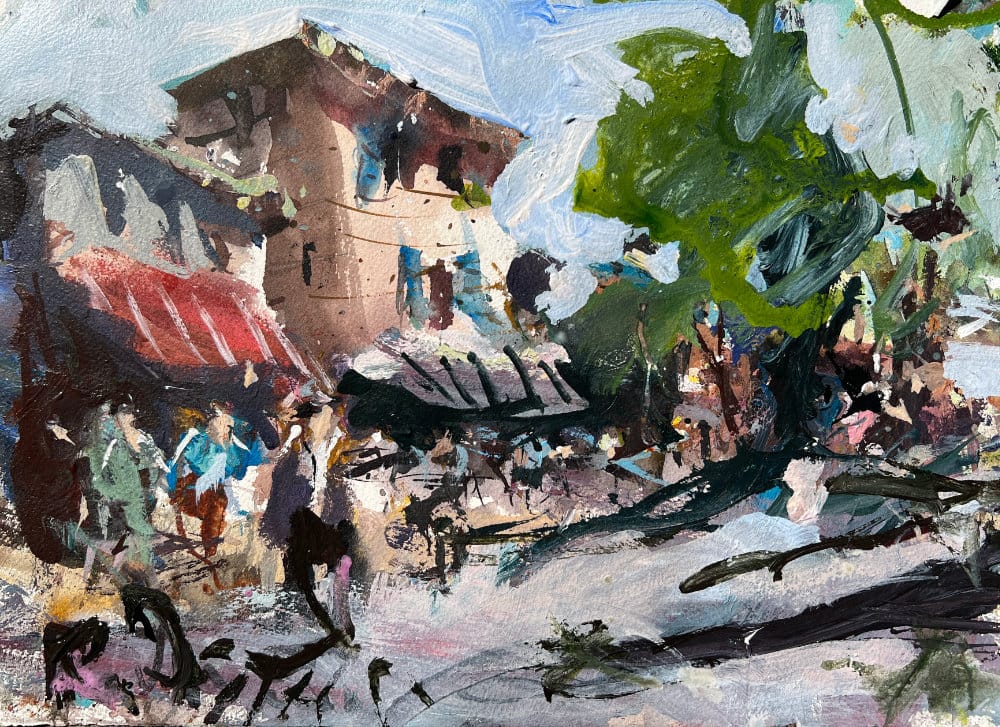
Common Mediums Used in Mixed Media Art
Below is a list of materials many artists ind enjoyable to work with when creating mixed media art. However, we are talking the kitchen sink here, so feel free to experiment with these and others as you become more comfortable.
Paints
- Acrylics: Fast-drying, versatile, and great for layering.
- Watercolors: Perfect for soft washes and transparent effects.
- Gouache: Opaque and matte, ideal for bold, flat areas of color.
Drawing Tools
Ink pens, Crayons, Markers, Charcoal, Graphite, Colored pencils — all can be layered over paint or collage for detail work.
Collage & Textures
- Scrap paper, Handmade paper, Newspaper, Fabric, Tissue, Old drawings, Photos, Anything that can be glued down.
Other Techniques
Gel mediums, Texture pastes, Stencils, Stamps, Found objects for extra dimension
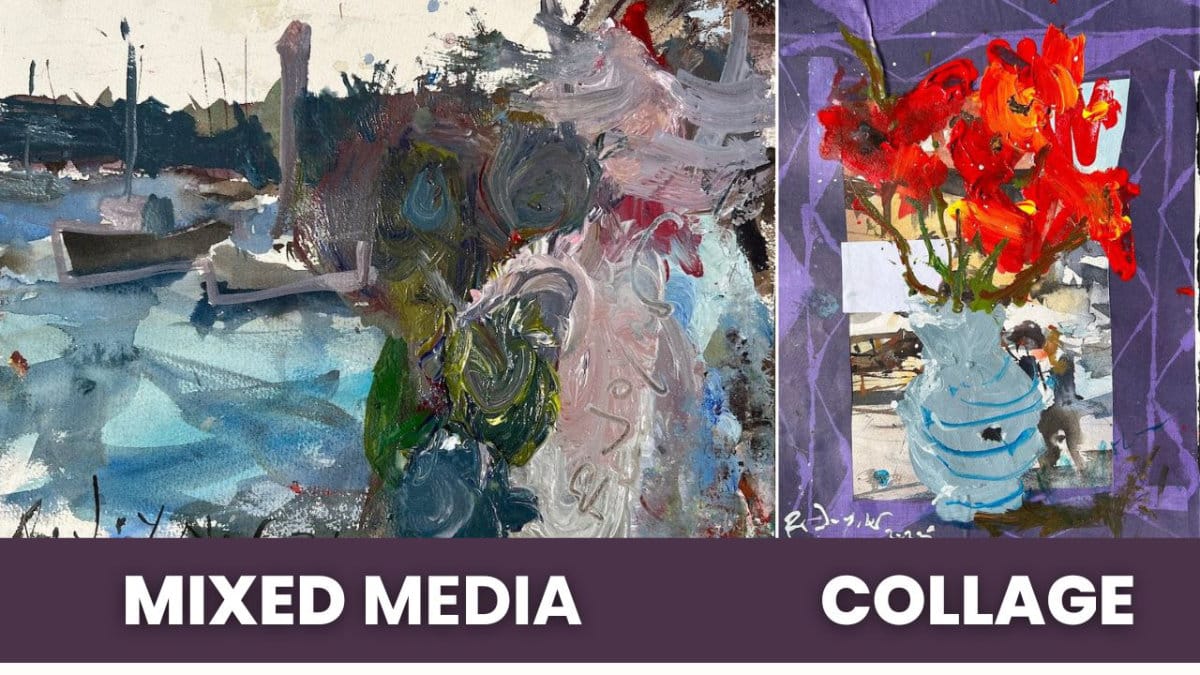
Mixed Media vs. Collage — What’s the Difference?
- Collage is the art of layering paper or materials to create an image or design. You can make a collage using only one medium (for example, all paper).
- Mixed media always uses more than one medium. Collage can be part of a mixed media piece, but mixed media isn’t limited to collage.
The example above shows two versions, on the left is an acrylic, watercolor and graphite painting which would qualify as mixed media art. The version on the right is all the same mediums as the first example, but with collage borders. That would be considered a collage.
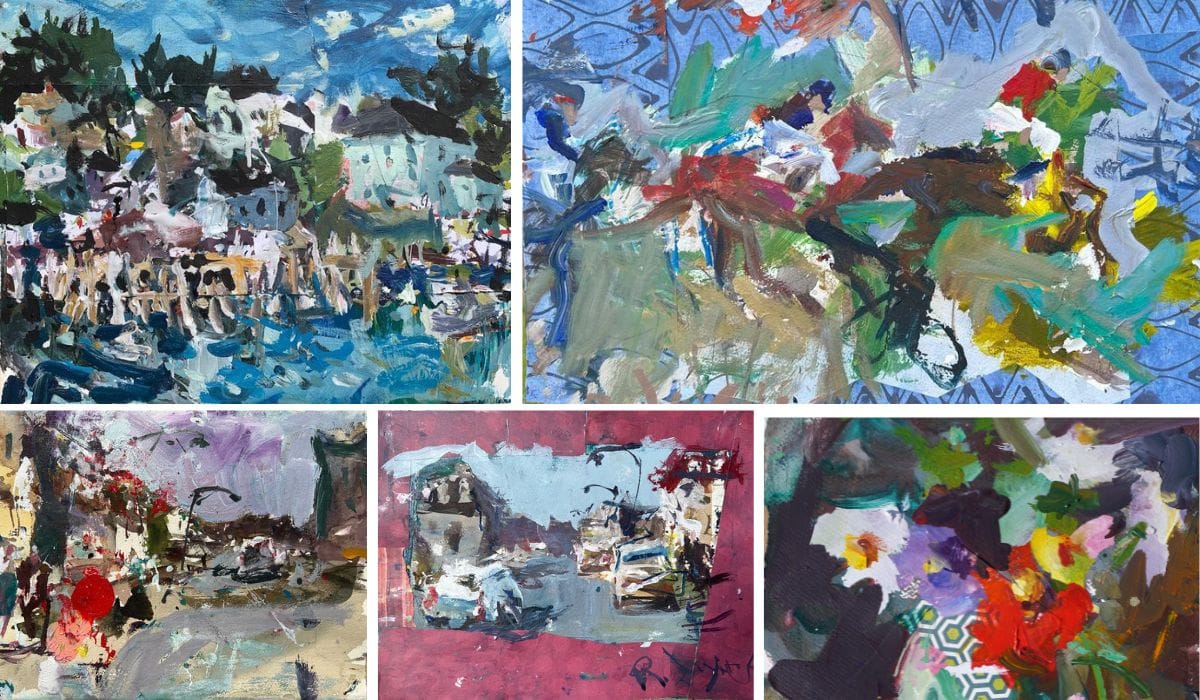
Examples of Mixed Media Projects
If you’re wondering what mixed media looks like in action, here are a few examples:
- Rugged Maine coast with acrylics and collage (top left)
- Horse racing art with collage borders, crayon and acrylics over reject watercolor (top right)
- Urban cityscape with watercolor reject with acrylics (bottom left)
- A cityscape combining acrylic, watercolor and collaging border (bottom center)
- Close-up of flowers in vase created with collage and acrylics (bottom right)
Want to see more? Explore my Mixed Media Tutorials for step-by-step projects you can try right now.
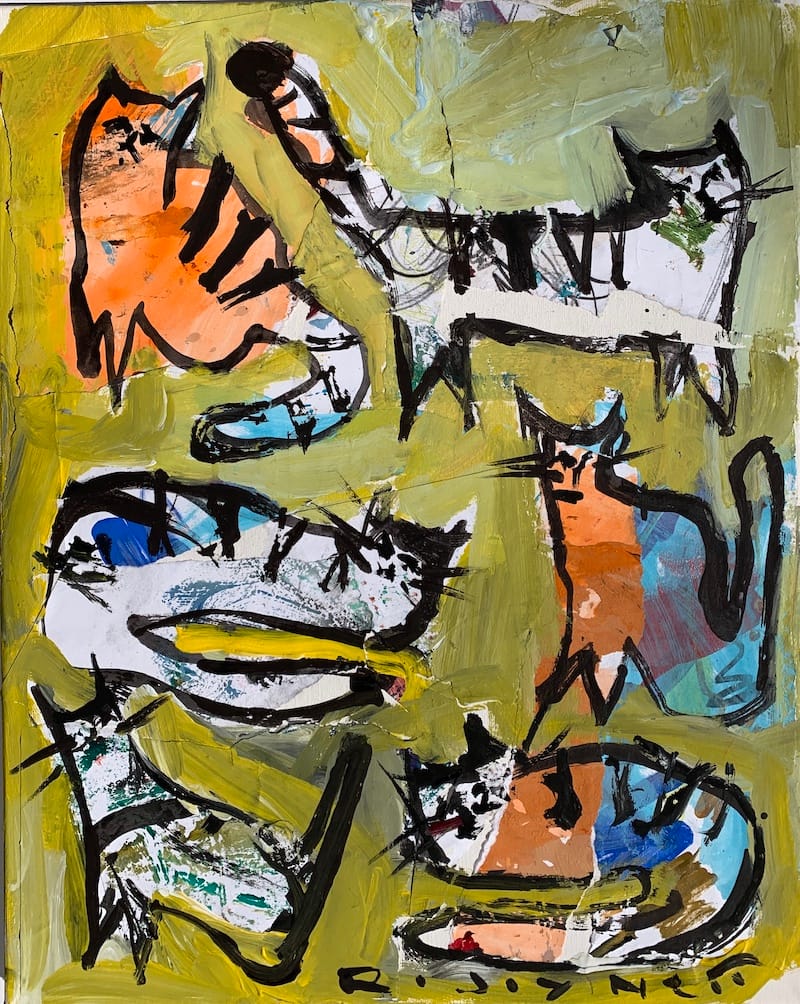
Beginner Tips for Trying Mixed Media
- Start small — try an 8x10 sheet of watercolor paper or a small canvas.
- Limit your mediums to two or three per project at first.
- Keep a “scrap box” with interesting papers and textures.
- Don’t overthink it — mixed media is all about exploration.
- Avoid getting stuck - I it sucks, you can always add another layer and see where it takes you.
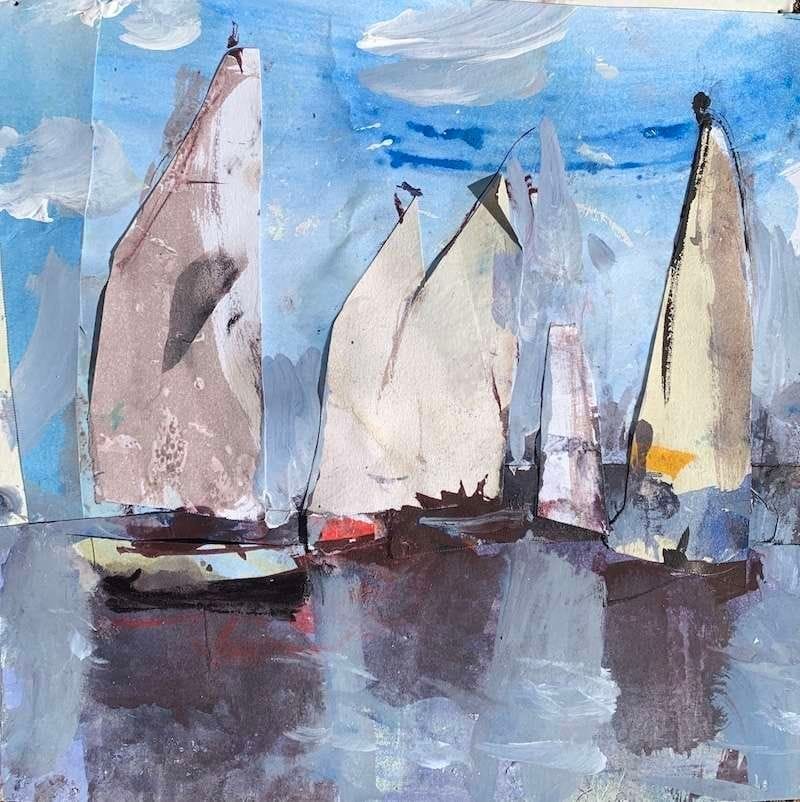
Ready to Start? Here’s Your Next Step
Now that you know what mixed media art is, the best way to learn is to try it. Grab some supplies, set aside perfection, and let your creativity leads.
For more help, check out:
- Essential Tools & Materials for Mixed Media Art
- Your Guide to Mixed Media Collage Art Hub — all my tutorials in one place.




